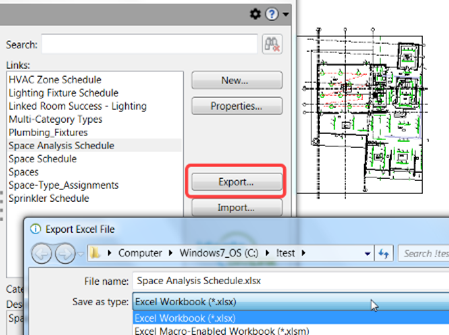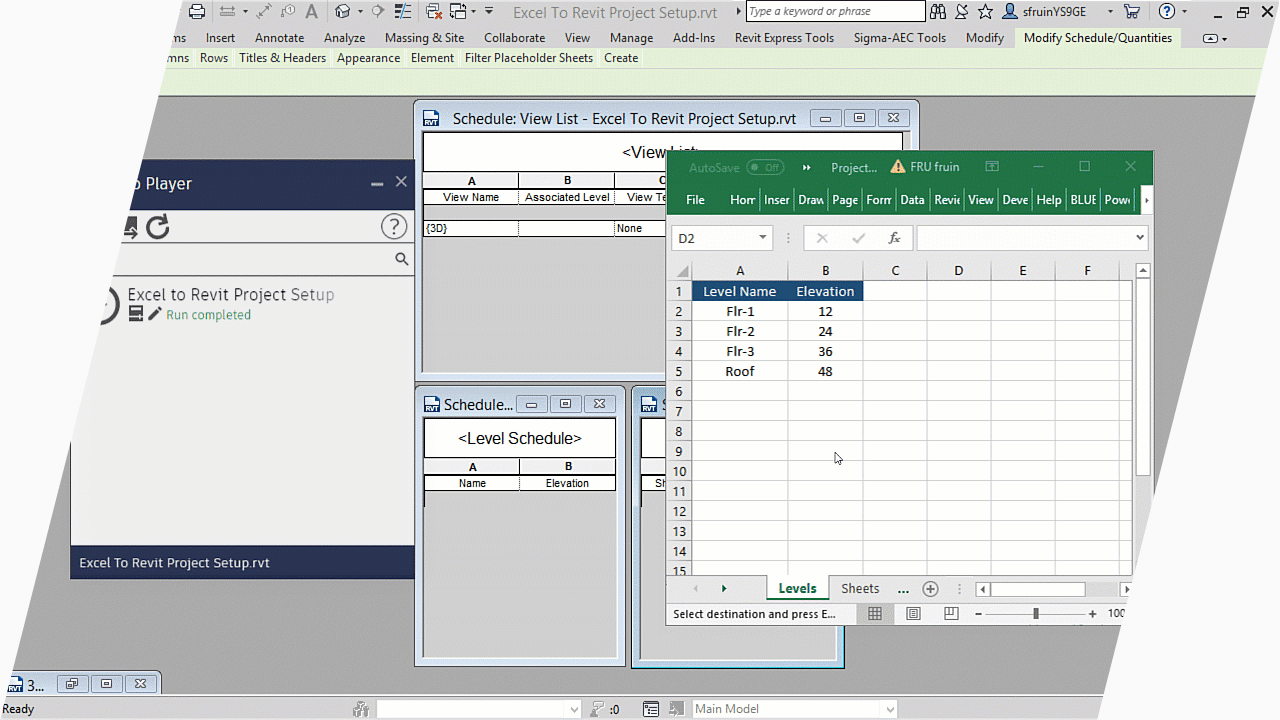Import Excel into Revit Seamlessly: A How-To Guide
Wiki Article
Excel-to-Revit: A Game-Changing Workflow for Architectural Style - Introducing the Keys
Are you tired of costs hours on building layout? Look no further! Presenting excel-to-revit, the game-changing process that will revolutionize your style procedure. With excel-to-revit assimilation, you can enhance your building layout, unlock effectiveness, and maximize cooperation within your group. In this write-up, we will reveal the secrets of this powerful device, revealing you just how it can transform your design tasks. Prepare to take your building style to the next level with excel-to-revit!The Power of Excel-to-Revit Integration

Picture the ease of being able to upgrade and modify job information in Excel, and instantaneously see those adjustments reflected in your Revit version. No much more hand-operated information entry or tiresome updates. With Excel-to-Revit assimilation, you can save time and reduce errors by leveraging the power of Excel's functions and formulas to instantly generate accurate information in Revit.
Not just does this integration boost performance, but it also boosts cooperation among group participants. You can easily share Excel documents with colleagues, that can after that import the information right into their Revit versions. This promotes a smooth exchange of details and ensures that every person is dealing with one of the most current data.

Enhancing Architectural Style With Excel-To-Revit
Enhancing architectural style is simplified with using Excel-to-Revit (revit plugins). With this effective integration, you can maximize your operations and conserve useful time throughout the design process. By leveraging the capabilities of Excel and Revit, you can seamlessly transfer information in between the 2 systems, getting rid of the need for hand-operated information access and lowering the danger of mistakesExcel-to-Revit allows you to import and export data easily, enabling you to quickly upgrade and change your architectural designs. You can create schedules, determine amounts, and create records in Excel, and afterwards move that information directly right into your Revit model. This assimilation makes sure that your layout information is always up-to-date and integrated, eliminating the need for hand-operated updates and decreasing the chances of disparities.
By making use of Excel-to-Revit, you can additionally capitalize on the effective computational capabilities of Excel. You can execute intricate calculations, analyze information, and automate repetitive tasks, all within Excel. With simply a couple of clicks, you can import the results back right into Revit, enabling you to make enlightened layout choices and optimize your architectural layouts.
Opening Efficiency: Exploring the Excel-to-Revit Workflow
Maximize your performance by effortlessly integrating Excel and Revit for a more effective operations. With the Excel-to-Revit workflow, you can unlock a whole new degree of efficiency in your building layout process. By making use of the power of Excel's information monitoring capabilities and incorporating it with the versatility and accuracy of Revit, you can simplify your design process and save useful time.Among the essential advantages of this combination is the ability to import and export data between Excel and Revit. This indicates that you can conveniently transfer job info, such as room timetables or product amounts, from one software to the other, eliminating the requirement for hands-on data entry and lowering the chances of errors. You can also develop personalized formulas and computations in Excel to automate recurring jobs and execute intricate estimations, which can after that be effortlessly integrated into your Revit designs.
Moreover, the Excel-to-Revit process enables for far better sychronisation and cooperation between group participants. With Excel serving as a main information hub, several team members can function on different elements of the job all at once, sharing and updating details in real-time. This not only enhances communication yet also guarantees that everyone is working with one of the most current information, removing the threat of inconsistencies.
Taking Full Advantage Of Cooperation: Excel-to-Revit for Architectural Teams
By seamlessly integrating Excel and Revit, building teams can substantially boost partnership and achieve much more effective design results. When utilizing this effective process, you can conveniently transfer information in between Excel spread sheets and Revit models, streamlining the style process and enhancing communication amongst staff member. With Excel-to-Revit combination, you can effortlessly import task data, such as area schedules, product amounts, and task criteria, straight into Revit, removing the need for manual information entrance and decreasing the possibilities of errors. click reference This seamless link enables for real-time updates, making sure that every person is dealing with one of the most current info and avoiding inconsistencies between various files.Moreover, by leveraging Excel's effective calculation capacities, you can execute complicated computations and analysis on your style data, offering beneficial insights and driving informed decision-making. This combination additionally allows you to export information from Revit to Excel, enabling you to produce extensive records, graphes, and graphs for discussions and evaluation. This collaborative process advertises effective interaction and sychronisation among employee, as Excel acts as a central center for data management and sharing.
Overall, by accepting the Excel-to-Revit workflow, building groups can accomplish greater levels of collaboration, performance, and precision in their design process. revit plugins. This assimilation equips groups to collaborate flawlessly, ensuring that everybody is on the very same web page and adding to the success of the task
Unveiling the Secrets of Excel-to-Revit Integration

Among the secrets of Excel-to-Revit combination is the capacity to utilize the power of solutions and calculations in Excel to drive criteria and generate facility geometries in Revit. You can connect Excel spreadsheets to Revit households, allowing you to input information straight right into the spread sheet and have it instantly upgrade in the Revit model. This enhances the style procedure and makes certain accuracy and consistency throughout the project.
Another key is the ability to create personalized routines and records in Excel, utilizing information removed from Revit. This allows you to examine and visualize project information in a manner that is not possible within Revit alone. You can easily generate amount take-offs, price quotes, and project timelines, offering useful understandings for decision-making and job administration.
On top of that, Excel-to-Revit assimilation allows efficient partnership among team participants. Numerous individuals can work with the very same Excel spread sheet concurrently, making it easier to collaborate and track changes. You can likewise use Excel's commenting function to give responses or communicate layout alterations.
Conclusion
So there you click have it, the secrets of excel-to-revit my review here combination have been introduced. This game-changing process has the power to simplify building design, unlock performance, and take full advantage of collaboration for building teams. By incorporating the power of Excel and Revit, engineers can now function a lot more efficiently, save time, and generate far better layouts. So why wait? Begin including excel-to-revit assimilation right into your architectural design procedure today and change the way you work.With simply a couple of clicks, you can import the results back right into Revit, allowing you to make informed style decisions and maximize your architectural designs.
By utilizing the power of Excel's data monitoring capacities and integrating it with the versatility and accuracy of Revit, you can improve your design process and conserve useful time.
By perfectly integrating Excel and Revit, building groups can significantly improve partnership and accomplish much more efficient design results. When utilizing this powerful workflow, you can easily transfer information between Excel spreadsheets and Revit versions, simplifying the layout process and enhancing communication among team members.Furthermore, by leveraging Excel's powerful calculation capabilities, you can carry out complicated calculations and analysis on your layout information, driving and offering useful insights notified decision-making.
Report this wiki page